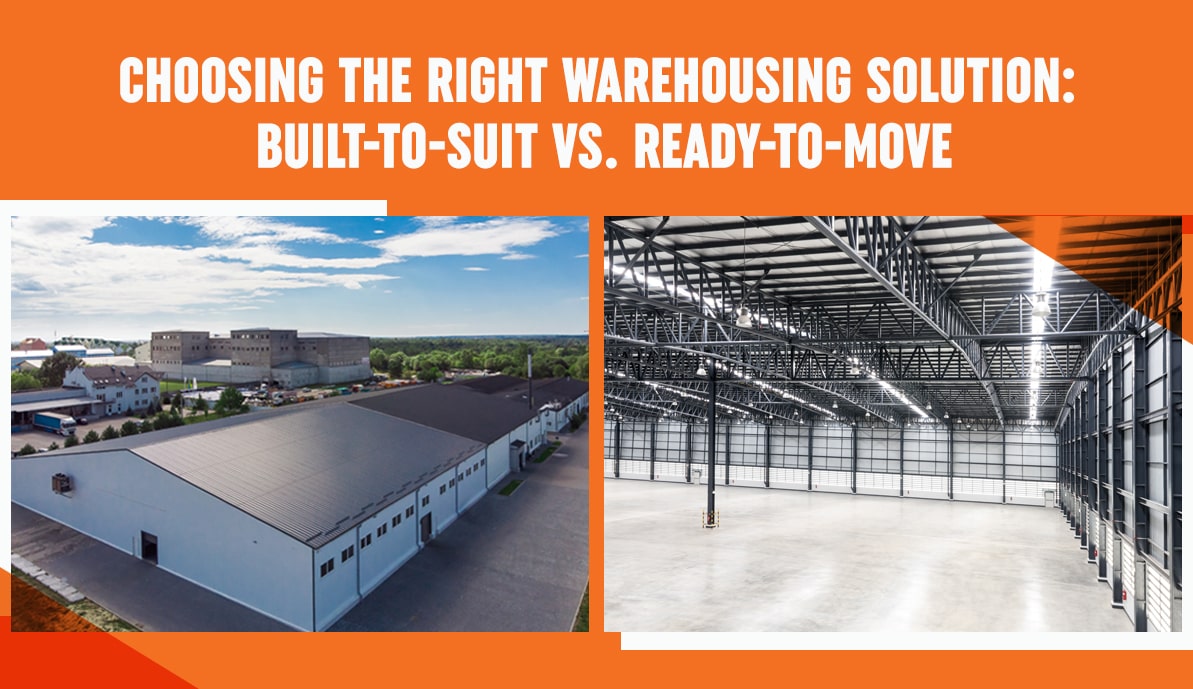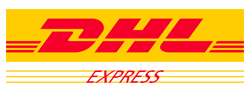Warehouses are an integral element that plays a significant role in every supply chain management framework. The best warehouse selection increases operational performance while decreasing expenses and making the logistics process more efficient. Modern companies have two options when seeking storage and distribution facilities. Built-to-suit (BTS) warehouses and Ready-to-Move (RTM) warehouses. The following piece examines the fundamental distinctions between Built-to-Suit and Ready-to-Move warehouses while presenting recommendations.
Ganesh Complex recognizes the absolute necessity of selecting an appropriate warehousing solution. Your decision-making process regarding a warehouse for sale in Kolkata or a factory for sale in Kolkata can be improved by understanding all the benefits and drawbacks.
What Is a Built-to-Suit Warehouse?
Companies consider built-to-suit warehouses since these facilities will develop and construct facilities that are precisely designed to meet their individual needs. Businesses collaborate with developers instead of using standard pre-built options to construct facilities whose dimensions precisely match their operational needs.
A Built-to-Suit warehouse includes several essential characteristics that make it unique.
Such facilities purposefully combine maximal space efficiency with operational optimization during their construction process.
A built-to-suit warehouse can achieve design standards that adhere to both regional regulations and protect the environment.
Companies gain flexibility by selecting appropriate sites that provide the best supply chain connections to suppliers and customers.
Selection of specific warehouse components brings optimization of business needs.
Advantages of Built-to-Suit Warehouses
Built-to-suit warehouses have various benefits that appeal strongly to companies with specific long-term requirements:
High Level of Customization:
The facility design allows you to create an optimal environment for storage needs combined with technological integration.
Customized warehouse design solutions enhance process efficiency and minimize operational delays at the facility.
Strategic Location Choice:
Select the location that matches your distribution route requirements.
The connection to suppliers together with customers becomes faster because of improved connectivity.
Regulatory Compliance and Sustainability:
Construct warehouses that comply with all necessary safety protocols as well as environmental regulations.
The construction should implement elements that reduce energy consumption while following sustainable design principles.
Scalability and Future Growth:
The created design incorporates the capability to update and expand facilities as needed.
The expansion of your business will enable your warehouse to adapt its structure according to developing needs.
Enhanced Security and Branding:
Custom features consist of advanced security systems which become available as part of the package.
The use of branded infrastructure projects helps to strengthen your company brand.
BTS warehouses remain an optimal choice for companies wishing to establish lasting storage systems because of their extensive advantages.
Disadvantages of Built-to-Suit Warehouses
Built-to-suit warehouses provide major advantages yet they also carry specific restrictions that property owners should consider.
Longer Development Timelines:
Project development alongside approval processes together with construction duration stretches out from multiple months up to several years.
Higher Initial Investment:
The expenses linked to warehouse project design alongside construction and land buying or leasing tend to reach notable amounts.
Long-Term Commitments:
The extended lease agreements for these built-to-suit projects may not match well with organizations that need frequent changes in their business needs.
Any business requiring built-to-suit warehouses must have well-defined long-term commitments together with enough time and financial means to pursue custom-built structures.
What Is a Ready-to-Move Warehouse?
Owners offer ready-to-move warehouses that they have constructed in advance for immediate facility occupancy. These ready-to-move warehouses satisfy basic storage requirements together with logistics operations which makes them beneficial for businesses in need of an affordable and fast solution.
A Ready-to-Move warehouse has several unique features which include:
Immediate Occupancy:
The facilities become available for occupancy straight after lease signing and completion of the purchase.
Cost-Effective:
Lower upfront costs compared to building a facility from scratch.
Flexible Lease Options:
Short-term lease agreements in RTM warehouses provide suitable solutions for temporary storage needs.
Proven Infrastructure:
Inspection of the facility becomes possible before the final agreement to validate essential operational needs.
The ready-to-move warehousing solution best suits companies and businesses that require fast storage expansion during peak periods.
Advantages of Ready-to-Move Warehouses
Ready-to-move warehouses present various advantages that draw multiple types of businesses because of their attractive features.
Quick Setup and Operations:
Your operations start right away since there is no necessary delay for construction.
Lower Initial Investment:
These facilities suit businesses that need facilities with low upfront costs..
Flexible Lease Terms:
Ideal for companies with seasonal or temporary storage needs.
The facilities allow you to expand or decrease operations without requiring long-term contractual obligations.
Tested and Proven Infrastructure:
You will get to examine the facilities and standards of a building before occupying it.
Seasonal or Temporary Use:
Businesses experiencing peak season demands can make use of these facilities as their temporary extra space solution.
Disadvantages of Ready-to-Move Warehouses
The advantages of RTM warehouses come with certain constraints that need attention as follows:
Limited Customization:
General-purpose construction of the facility fails to fulfill industry-specific demands.
Location Constraints:
Nowadays you only obtain available properties but these choices do not always offer ideal strategic positions.
Scalability Issues:
A pre-built warehouse typically does not provide adequate space for upcoming business expansion.
Potential Operational Inefficiencies:
A preinstalled design could lack optimization for your operations which may affect workflow.
When choosing a ready-to-move warehousing solution businesses need to assess functional limitations in relation to their operational demands.
Conclusion
Built-to-suit warehouses and Ready-to-Move warehouses need evaluation based on individual business requirements. Your company’s operational requirements alongside budget and growth objectives will determine the suitable warehouse choice.
A built-to-suit warehouse presents many custom features alongside unlimited expansion potential.
Careful evaluation of storage and logistics necessities helps select the solution that best enables operational efficiency.
Ganesh Complex dedicates itself to offering warehousing solutions that match your business needs. Evaluating all options strategically will lead you toward successful supply chain management.
Thus when choosing a warehouse for sale in Kolkata or a factory land for sale in Kolkata, weigh your options carefully and choose one that best fits your requirements.









